It has truly been said that man does not live by bread alone.
He also requires a mythic foundation on which to base his actions. In the
neolithic era his mythology was governed by a Matriarchal vision of reality.
In the subsequent Greco-Egypto-Mesopotamian mythology the Matriarchal series
went through a revision being replaced by an advanced Patriarchal mythological
consciousness. This system was followed by the Judeo-Christian mythological
system which endured as the basis of mythological belief until the seventeenth
and eighteenth centuries when the belief system was subverted by the emergence
of the Scientific Consciousness.
Unlike the mythopoeic consciousness which preceded it the Scientific
Consciousness left no place for supernatural explanations; all had to be
explained within a rational scientific framework. This placed a great strain
on a significant portion of the population which did not have the intellectual
equipment to evolve. Thus the basis of psychological comfort provided by
religion was destroyed. The code of behavior seemingly sent down from the
sky had lost its validity.
In place of an apparent unified consciousness it now became noticeable
that EuroAmerican man had an unconscious or subconscious mind as well as
a conscious mind. Thus another evolutionary degree of differentiation unfolded
that separated the advanced Scientific Consciousness from the anterior
Religious Consciousness. A struggle has ensued in which advanced people
are compelled to reintegrate their conscious and subconscious minds while
the Religious Consciousness divided into the two camps of the Devout and
the Reds resist.
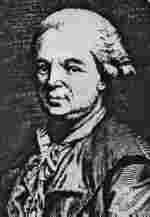
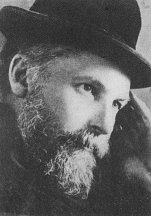
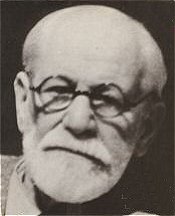
The discovery of what was known as the Unconscious began with the emergence
from the Religious Consciousness during and after the Enlightenment. Anton
Mesmer with his discovery of Animal
Magnetism or hypnotism may have been the first stage. Goeth and others
carried the discussion forward until the Englishman, FWH Myers isolated
or identified the subconscious by the name of the unconscious in 1886.
The notion of the unconscious as known during the twentieth century
was formulated by Sigmund Freud during the century's first decade. Both
Myers and Freud misconceived the nature of the sub or unconscious. Myers'
conception was more generous than Freud's and more in accordance with proto-scientific
Patriarchal Greek mythological conceptions which were also mistaken but
visionary.
In Myers' vision of the unconscious it had two aspects: the destructive
aspect which he gave the Greek name of Ate and the constructive aspect
he termed Menos. Thus he recognized that the unconscious could be good
or bad.
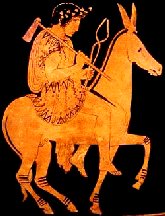
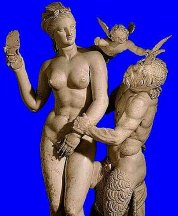 Myers' vision may have been based in Greek mythology. It will be remembered
that the creative god, Hephaestus,
was married to the emotional goddess, Aphrodite.
Hephaestus and Aphrodite had their digs at the bottom of the sea which
is to say the symbol of the unconscious which corresponds to the seeming
location of the unconscious at the bottom of the mind or the brain stem.
Myers' vision may have been based in Greek mythology. It will be remembered
that the creative god, Hephaestus,
was married to the emotional goddess, Aphrodite.
Hephaestus and Aphrodite had their digs at the bottom of the sea which
is to say the symbol of the unconscious which corresponds to the seeming
location of the unconscious at the bottom of the mind or the brain stem.
Thus it is said that Aphrodite, the goddess of love, which is to say
irrationality, emerged from the sea on the half shell.
So, I suppose, love, being never rational, is a subconscious decision
which is one sided or a half shell. Love may be either constructive or
destructive.
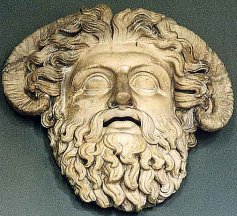
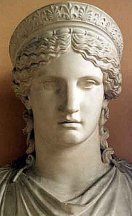 Thus also good ideas, a la Hephaestus, seem to rise unbidden from the subconscious
or the depths.
Thus also good ideas, a la Hephaestus, seem to rise unbidden from the subconscious
or the depths.
Hephaestus and Aphrodite were ancient gods dating back to the Matriarchy.
The incoming patriarchal god, Zeus,
had no part in their creation; they were solely a part of Hera
the great goddess of the Matriarchy. She was much older than Zeus but the
youthful Zeus united with her in the form of a cuckoo bird who as she clutched
it to her breast slipped down her dress and ravaged her. So the Patriarch
subsumed the Matriarch.
When Hephaestus sided with his mother against Zeus, the great Olympian
threw him from heaven laming him. Then Aphrodite was given him to wife.
Unbridled lust combined with creative activity, Ate and Menos.
Aphrodite was not happy with the lamed god. While Hephaestus was on
trips to Olympus she dallied with another matriarchal god, Ares, the symbol
of the uncontrollable desire or rage. Hephaestus having been informed of
Aphrodite's infidelity set a trap for her and Ares. He constructed a very
fine net of gold which he suspended over his bed.
Aphrodite, unbridled lust, and Ares, uncontrollable rage, were literally
caught in the act being unable to disengage. Thus we have two aspects of
Ate, lust and rage, caught by the efforts of creativity in the depths of
the sea, or the unconscious.
Hephaestus called the other gods to witness. Athene, a new patriarchal
goddess who was the counterpart and antithesis of Ares, turned away in
disgust. Apollo, another new patriarchal god and the antithesis of Hermes
just laughed. Hermes, the patron god of thieves, a Matriarchal god, said
he would change places with Ares in a second. Thus, lust, rage and dishonesty
are combined in one figure of Ate in the unconscious.
This image of Ate and Menos is what Myers meant by his idea of the unconscious.
Freud, on the other hand, understood the unconscious as pure Ate.
Both the Greeks and Myers attempted scientific explanations while Freud
gave the unconscious a religious or supernatural twist. He seemed to believe
that the unconscious has an independent existence outside the mind of man
which is beyond man's control while being wholly evil.
Opposed to morality, Freud then wished to unleash this conception of
the unconscious on the world. He was uniquely prepared to do so. All he
had to do was manipulate the symbols of psychoanalysis of which he had
full control The question then is: did Freud have deeper understandings
which he concealed in order to bring about his desired ends?
Such is the case with his conceptions of sexuality. There is no need
for him to have had deeper understanding, after all, he was a pioneer opening
a new field of inquiry. On the other hand . . .
Defining the unconscious was done by many men preceding Freud so that
his was only one of many understandings, not necessarily the best, although
today in common belief he invented the concept.
Next he chose to define the concepts of sex. He was equally successful
in this field as far as the public was concerned although I differ in understanding
the matter as I do with the unconscious.
In analyses with patients Freud discovered that there was a fear of
castration out of all proportion to actual incidents of sexual mutilation.
It follows then that castration symbolizes something other than the removal
of the genitals. I contend that it was impossible for Freud to have missed
the significance of castration as a symbol.
Castration as a symbol represents the broader concept of Emasculation,
in this case psychological emasculation. This does occur in everyone's
life in many different manifestations while being something to really fear
or avoid. Unless I am mistaken all neuroses and psychoses depend from it.
Understanding Emasculation is as much a "royal road to the unconscious"
as dreams.
I do not accept Freud's map of the mind but we both agree that the Ego
or Animus is the key to identity. Freud fully understood the significance
of the Ego. Thus when the Ego is challenged with an affront or insult to
which it is either unable or doesn't know how to respond to successfully,
emasculation of some degree takes place. There is no unconscious, just
as there are no instincts, so that a fixation is suppressed in the subconscious
as a result. These fixations produce effects, which can be grouped in categories
such as hysteria, paranoia, obsessive-compulsiveness and the whole panoply
of generalized affects. The affects then find expression physically and
psychologically or in another word, psychosomatically. The mind and the
body is one unit. These effects answer to what Freud called neuroses and
psychoses.
When the Ego is denied its right to assertion the denial is frequently
expressed in a hysterically sexual manner corresponding to the insult.
If the victim feels he has been taken from behind then he will undoubtedly
resort to anal intercourse as one type of underhanded response in an attempt
to get back his own as is the case with homosexuality.
The human mind is very limited in its inventiveness so all these affects
can be catalogued and matched with the insult so that, absent resistance
under analysis, they can easily be addressed and exorcised. The problem
is not as complicated as it has been made out.
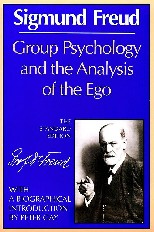 Freud understood
so much more than he was willing to tell but then he was not a scientist
but a Jewish prophet. In his Group
Psychology and Analysis of the Ego, to which we will return, he
gave the game away.
Freud understood
so much more than he was willing to tell but then he was not a scientist
but a Jewish prophet. In his Group
Psychology and Analysis of the Ego, to which we will return, he
gave the game away.
The individual can and does submerge his own ego into a, or at various
times, many group egos. Prominent among these group egos are ethnic, national
and religious group egos.
Just as the individual can be emasculated so can ethnic, national or
religious groups be emasculated which the individual will share.
I mention the Jews only as the most obvious case although Negroes, American
Indians or any defeated people suffer emasculation to one degree or another.
Thus I will discuss the unconscious or subconscious from a general point
of view with Freud's concept prominent while the concept of Emasculation
will be discussed by my understanding based on the studies of Freud on
the castration complex and group psychology.
Bear in mind that I think Freud criminally distorted scientific knowledge
for ethnic, national and religious ends.
2: Quo Vadis?
Born with an integrated mind, circumstances soon disintegrate the personality
so that the mind must be reintegrated to return to a state of psychic wholeness.
A sort of personal mythology is created by one's early disintegrative experiences
which form one's dreamscape in an attempt to deal with an overwhelming
reality. However, when a person gains some control over external reality
when the personality is integrated and the initial dreamscape based
on early memories is eliminated a sort of distressing vacuum ensues
which exists until a new dreamscape is formed which, while sufficient to
ease the discomfort, lacks the depth and substance of the fully mythologized
dreamscape of childhood.
One has reached a scientific consciousness. It may not be as satisfying
but it fills the space while not controlling one's behavior.
Western man, Euroamerican man, as the only segment of mankind so differentiated,
had then to begin to work out a new mythology based on rational scientific
ideas.
In other words he had to create a comfortable basis from which to understand
and interpret the world.
Thus after a couple proto mythographers in the early nineteenth century
a cluster of writers or neo-mythographers began to create a mythology for
the Scientific Consciousness.
The destruction of the Religious Consciousness began to become obvious
after the eighteenth century Industrial Revolution in England. With the
advent of steam the problem began to become acute.
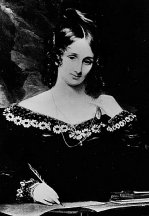
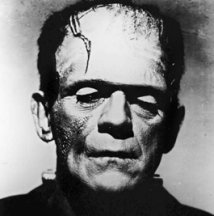
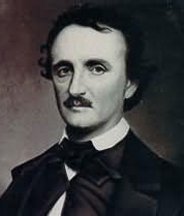
The proto-mythologers may be Walter Scott, Byron, Peacock and the Shelleys.
There is a departure in feel and style with these writers. Mary Shelley's
Frankenstein
posits the scientific problem laying a foundation for the new mythology
but does not itself deal with the psychological effects.
The first mythographer to make an attempt to explain the split consciousness
from my own researches was the American, Edgar Allan Poe, 1801-49.
Poe began his writing career as a psychologically troubled man ending
it insane. Along the way he wrestled with the problem of the void in the
subconscious created by the elimination of the supernatural. His message
was received by the later group of mythographers who read him without exception
all being influenced by his work.
Poe caught the great intellectual change as it emerged. The period from
1830-1880 was the period of the great initial scientific advances that
would change the world. From Poe's death in 1849 to the emergence of the
new breed of mythographers beginning in the 1880s was a period of literary
quiescence.
Poe began his influential masterpiece The
Murders in the Rue Morgue with the paragraph:
As the strong man exhibits his physical ability, delighting in such
exercises as call his muscles into action, so glories the analyst in that
moral activity which disentangles. He derives pleasure from even
the most trivial occupations bringing his intellect into play. He is fond
of enigmas, conundrums, hieroglyphics; exhibiting in his solutions of each
a degree of acumen which appears to the ordinary apprehension as
praeternatural. His results brought about by the very soul and essence
of method, have in truth, the whole air of intuition.
By analysis Poe didn't mean the sort of educated guesswork that had
passed for analysis in pre-scientific consciousness. No, this was scientific
analysis that disassembled a problem into the component parts revealing
the secret then reassembling the problem in its original state.
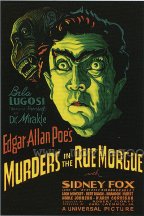
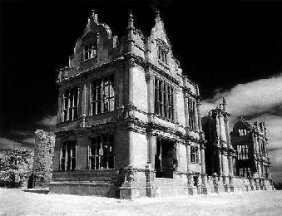
In doing so Poe revealed himself as a master mythographer as well as a
scientist. In C. August Dupin, the initials spell cad, Poe created the
archetype of the eccentric madman who would be the hero of countless novels.
As a projection of Poe's own mentality Dupin and his unnamed alter ego
live in a dilapidated house. The house is the psychological symbol for
the self which Poe uses almost to exhaustion. The Fall
of the House of Usher prefigured Poe's own descent into madness.
A number of alter egos represented his sane side in the House of Usher,
William Wilson, Rue Morgue and most notably in The System Of Dr.
Tarr and Professor Fether in which his sane alter ego drops the insane
ego off at the door of an insane asylum while continuing on his own way
The two Dupins live in a darkened house during the day, creaking not
unlike the House of Usher, going out only into the depressed asylum of
the night.
Poe thus presents the separation of the conscious and the subconscious
modern man in the riddle of the murders in the Rue morgue. In the Rue Morgue
the subconscious is represented by the Orang u tang or animal side of human
nature while the conscious is represented by the sailor owner. From Poe
to at least Freud, the subconscious was popularly considered a dangerous
wild side of man.
In Dupin and his alter ego versus the sailor and the Orang, Poe may
have perceived the emergence of a new species much as H. G. Wells was to
do at the end of the century. Thus both men perceived that the antecedent
consciousness and the Scientific Consciousness were not just matters of
learning but a genetic difference, although they didn't put it that way,
which couldn't be bridged.
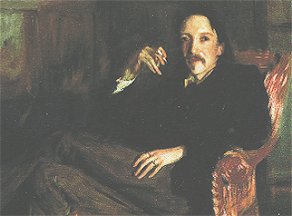
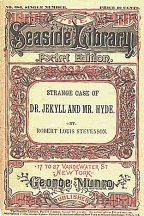 Both concepts were brought out brilliantly by Robert Louis Stevenson (1850-94)
in his 1886 novel: The
Strange Case of Dr. Jekyll and Mr. Hyde. This book may properly
be said to be the first true presentation of the scientific myth.
Both concepts were brought out brilliantly by Robert Louis Stevenson (1850-94)
in his 1886 novel: The
Strange Case of Dr. Jekyll and Mr. Hyde. This book may properly
be said to be the first true presentation of the scientific myth.
In this case the good Dr. Jekyll is the disciplined, self-controlled
scientist committed to doing good in the world. But beneath his intelligent
exterior he feels the wild man lurking. The primitiveness of what is in
fact a predecessor homo sapiens is very appealing ot him. Unable to bring
this aspect of his personality to the surface by conventional means he
resorts to drugs.
Having once freed his wild side, who he names Mr. Hyde, his lesser side
is demoted from Dr. to Mr., he is unable to put Hyde back into the bottle
or syringe, whichever the case may be. Hyde assumes control of the personality
which leads both aspects of the personality to destruction.
Thus Stevenson brilliantly prefigured the twentieth century future in
which the scientist is dragged back to the level of the predecessor species
through a psychological inability to take the great leap forward and turn
his back on the past.
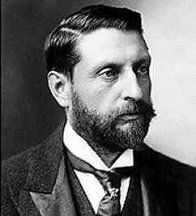
The same sense of the alienation from a predecessor existence was evidenced
in the work of a great transitional figure, H.
Rider Haggard (1856-1925). Let me say that Haggard is a much neglected
literary figure. As his topics concerned Esoterica and Africa, the former
of which is scorned and the latter ignored, his literary reputation has
been allowed to disappear. Having read a large part of his work in the
pursuit of these studies I would rank Haggard very highly, certainly among
the top ten authors, possibly as high as number five. One and two are Walter
Scott and Balzac, while Dumas holds third with possibly Trollope in the
fourth spot. Haggard is a writer of genius.
He spent his late teens and early twenties in the South African provinces
of Natal and Zululand where he acquired a vision of the difference between
the First Born, the Negro, and the current scientific man. As the saying
goes, there's something lost and something gained when you move up the
ladder.
Haggard never made it to scientific man being stuck in the Religious
Consciousness. He belonged to the Esoteric side rather than the Christian.
In the third novel of his great African trilogy, Allan
Quartermain,
Haggard examined the difference between the African and the European in
this manner:
Ah! this civilization what does it all come to? Full forty
years and more I spent among savages, and studied them and their ways;
and now for several years I have lived here in England, and in my own stupid
manner have done my best to learn the ways of the children of light; and
what do I find? A great gulf fixed? No, only a very little one, that a
plain man's thought may spring across. I say that as the savage is, so
is the white man, only the latter is more inventive, and possesses a faculty
of combination . . . but in all essentials the savage and child of civilization
are identical.
In the same book Haggard also put the problem more poetically:
. . . he dreams of the sight
of Zulu impis
breaking on the foe
like surf upon the rocks
and his heart rises in rebellion
against the strict limits
of the civilized life.
Here Haggard states the central thesis of Stevenson's Jekyll and Hyde.
In the evolution of the species there is always a small gulf between two
adjacent species: nature does not take great leaps, it moves in small increments.
Thus it may be a small leap between the two, especially when the next transition
creates not only a new variety but a new species, but the leap is backwards
as in Jekyll's case while it is impossible for Hyde to make the leap forward,
nor is he capable of adjusting to the new strict limits. Wasn't Stevenson
precocious?
Haggard, who was not of the Scientific Consciousness, was left behind
while his work formed the basis of the greatest of the scientific mythographers.
Before moving on let us here consider the patron saint of the future
Red/Liberal aspect of the Religious Consciousness, the Frenchman, Victor
Hugo (1802-85).
Paris Is A Leaky Basket
Paris has another Paris under herself; a Paris of sewers;
Which has its streets, its crossings, its squares, its blind alleys,
its arteries and its circulation, which is slime minus its human form.
~ Victor Hugo - Les Miserables
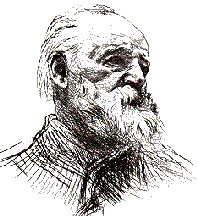 As
Haggard was a transitional figure for the mythographers one might say that
Victor Hugo created the literary foundation for the Red/Liberal faction
of the Religious Consciousness. His Les
Miserables with its tragi-comic format forms the bedrock of Revolutionary
beliefs. Hugo was himself a Revolutionary. His novel, Les Miserables,
is the account, so he says, of the apotheosis of Jean Valjean from bestiality
to salvation. Along the way to his apotheosis Valjean makes a detour through
the sewers of Paris.
As
Haggard was a transitional figure for the mythographers one might say that
Victor Hugo created the literary foundation for the Red/Liberal faction
of the Religious Consciousness. His Les
Miserables with its tragi-comic format forms the bedrock of Revolutionary
beliefs. Hugo was himself a Revolutionary. His novel, Les Miserables,
is the account, so he says, of the apotheosis of Jean Valjean from bestiality
to salvation. Along the way to his apotheosis Valjean makes a detour through
the sewers of Paris.
Hugo was a poet; his account of the sewers of Paris is, shall we say,
poetic. In fact a scatological masterpiece worthy of our own Lenny Bruce.
If Lenny had studied Vic a little he would have been able to say everything
he wanted to say while staying out of jail at the same time.
One wonders whether Freud read Hugo. There are certain similarities
in style. Certainly they both seem to have had the same notion of the unconscious.
Valjean's trip through the sewers of Paris, he with the bleeding Marius
on his back, must have been intended as a representation of the unconscious.
And a very funny one at that.
Freud would certainly agreed with Hugo when the latter wrote: The history
of men is the history of cloacae. From Hugo's description of the sewers
of Paris it is clear that Paris was not anal retentive.
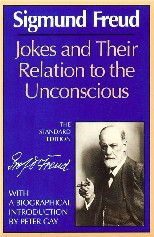 Freud
was no less scatological in his approach to psychology than this astonishing
section of Hugo's book. Who wouldn't be miserable down in a sewer; miserable
enough if only your mind was in the sewer. In Hugo one gets the same macabre,
morbid sense of humor Freud exhibits in his own work. Oh yes, read properly
Freud tells a lot of jokes. Didn't he write a book titled: Jokes
and Their Relation to the Unconscious? Sure he did. Knew what he
was talking about too.
Freud
was no less scatological in his approach to psychology than this astonishing
section of Hugo's book. Who wouldn't be miserable down in a sewer; miserable
enough if only your mind was in the sewer. In Hugo one gets the same macabre,
morbid sense of humor Freud exhibits in his own work. Oh yes, read properly
Freud tells a lot of jokes. Didn't he write a book titled: Jokes
and Their Relation to the Unconscious? Sure he did. Knew what he
was talking about too.
The first chapter of the section of Hugo's book, The Intestines of
Leviathan is a series of morbid one liners which are as funny as anything
Lenny Bruce came up with. Double entendre? To say Paris is a leaky basket!
In the underworld homosexual argot of Jean Genet the term basket refers
to a man's crotch and penis. Undoubtedly the same argot was current in
Hugo's time. He was a student of criminal argot. So Paris being a leaky
basket is equivalent to saying Paris was incontinent, pissing all over
itself. Don't you think that's funny?
And then: "The sewer is the conscience of the city." Hm? "This can be
said for the garbage dump, that it is no liar." I ask you, does Victor
Hugo know how to get down and boogie? Let us follow Jean Valjean into the
"conscience of Paris" "which is no liar" from which as Hugo says Villon
talks to Rabelais. Fabulous images, morbid, but fabulous.
To be sure, psychology in 1862 when Les Miserables was published,
had not been developed, yet notice how closely Hugo's tongue-in-cheek,
laughing up his sleeve, description of Jean Valjean's journey through the
pitch black maze of this subterranean worker's paradise into which from
time to time faint glimmerings of light enter answers to images of Freudian
Depth psychology. Depth psychology? Was that a pun or play on words?
Just imagine Jean Valjean as he enters the sewer. Take time to construct
concrete images in your mind. After this, shall we say, harrowing of hell
not unlike that of Theseus and Peirithous, from which Peirithous never
returned, Valjean receives his apotheosis not unlike Hercules. One might
also compare this scene with the temptation of Christ.
Valjean is carrying the bleeding Marius on his back who might or might
not be dead. Hugo doesn't let us know. This might be compared to one's
old self before or during the integration of the personality. In fact Valjean
sheds Marius after emerging from the sewer from which the gatekeeper of
Hell, Thenardier, allows him to emerge after being paid his obol.
The sewer is certainly a symbol of the unconscious for the scatological
Feud who seems to revel in such fecal images. Amidst a chatty history of
the sewers of Paris which Hugo keeps up Valjean plods through the darkness
always intuitively heading in the right direction. He evades the thought
police who are searching for him or someone just like him in the sewers.
A shot sent blindly down his gallery grazes his cheek. Jesus! Isn't a man
safe from harassment in the depths of his own mind. If you think the streets
of Paris are dangerous, try the sewers.
Valjean is exhausted from his long walk carrying Marius on his back,
poor suffering humanity, the sign of the cross, nevertheless with the heart
of a lion he plods on. He moves forward through deepening fluids as his
feet sink into fecal matter "which does not lie" while Hugo carries on
a charming separate conversation with us about little-known facts of the
Paris sewer. No, the fecal matter, as well as Hugo, tells the truth however
hard that may be to decipher from the material at hand as well as underfoot.
As the fluid (also however that may be composed as Hugo is writing scatologically)
rises, his feet sink up to the knees into "the conscience of the city."
Get this! Valjean is one of the great strongmen, he lifts the dead weight
of Marius above his head on his extended arms still sucking his feet from
the muck. Hugo does not reveal whether Valjean lost his shoes during this
ordeal or not. Perhaps of all the details Hugo records, this particular
item which consumes my interest had none for him.
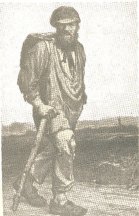 Nevertheless,
heedless of the danger to his shoes, Valjean plods on. Plod, plod.
Nevertheless,
heedless of the danger to his shoes, Valjean plods on. Plod, plod.
Now, here's detail of interest Hugo does record. Feet and legs deep
in the conscience of Paris, Marius held above his head, visualize this,
the fecal fluid had risen above Valjean's mouth and nose so that he has
to tip his head back, I'm not sure this would be effective, until only
a mask can be seen rising eerily above the surface, as well as two arms
and Marius. He ain't heavy, he's my other self. Seen in Stygian darkness
that is.
If we're all in the same sewer here imagine particles of the conscience
of Paris, scatologically known as turds, bumping up against the mask probably
trailing behind Our Man of the Sewer in a wake of fetid glory.
Even in the pitch black Thenardier is watching this spectacle. Fortunately,
the "psychic" crisis is past. Valjean leaves the conscience of Paris which
does not lie, you can say that about it, behind striking solid ground.
A striking vision of Freud's and the Revolution's reality. Had Valjean
been given the name Spartacus the Revolutionary vision would have been
complete. The Red/Liberals had spent a hundred years or more in the sewers
of Paris before they turned this primary text of theirs into the Broadway
musical of Les Miserables. Next time you see it put it into this context
of the sewers of Paris. The songs will take on new meaning.
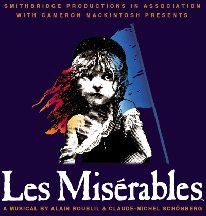
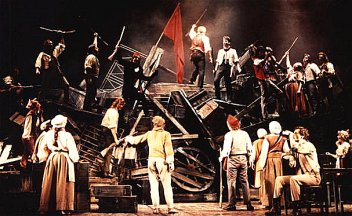

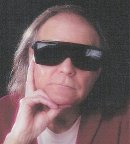







 Freud understood
so much more than he was willing to tell but then he was not a scientist
but a Jewish prophet. In his
Freud understood
so much more than he was willing to tell but then he was not a scientist
but a Jewish prophet. In his 







 As
Haggard was a transitional figure for the mythographers one might say that
Victor Hugo created the literary foundation for the Red/Liberal faction
of the Religious Consciousness. His Les
Miserables with its tragi-comic format forms the bedrock of Revolutionary
beliefs. Hugo was himself a Revolutionary. His novel, Les Miserables,
is the account, so he says, of the apotheosis of Jean Valjean from bestiality
to salvation. Along the way to his apotheosis Valjean makes a detour through
the sewers of Paris.
As
Haggard was a transitional figure for the mythographers one might say that
Victor Hugo created the literary foundation for the Red/Liberal faction
of the Religious Consciousness. His Les
Miserables with its tragi-comic format forms the bedrock of Revolutionary
beliefs. Hugo was himself a Revolutionary. His novel, Les Miserables,
is the account, so he says, of the apotheosis of Jean Valjean from bestiality
to salvation. Along the way to his apotheosis Valjean makes a detour through
the sewers of Paris.
 Freud
was no less scatological in his approach to psychology than this astonishing
section of Hugo's book. Who wouldn't be miserable down in a sewer; miserable
enough if only your mind was in the sewer. In Hugo one gets the same macabre,
morbid sense of humor Freud exhibits in his own work. Oh yes, read properly
Freud tells a lot of jokes. Didn't he write a book titled:
Freud
was no less scatological in his approach to psychology than this astonishing
section of Hugo's book. Who wouldn't be miserable down in a sewer; miserable
enough if only your mind was in the sewer. In Hugo one gets the same macabre,
morbid sense of humor Freud exhibits in his own work. Oh yes, read properly
Freud tells a lot of jokes. Didn't he write a book titled:  Nevertheless,
heedless of the danger to his shoes, Valjean plods on. Plod, plod.
Nevertheless,
heedless of the danger to his shoes, Valjean plods on. Plod, plod.


